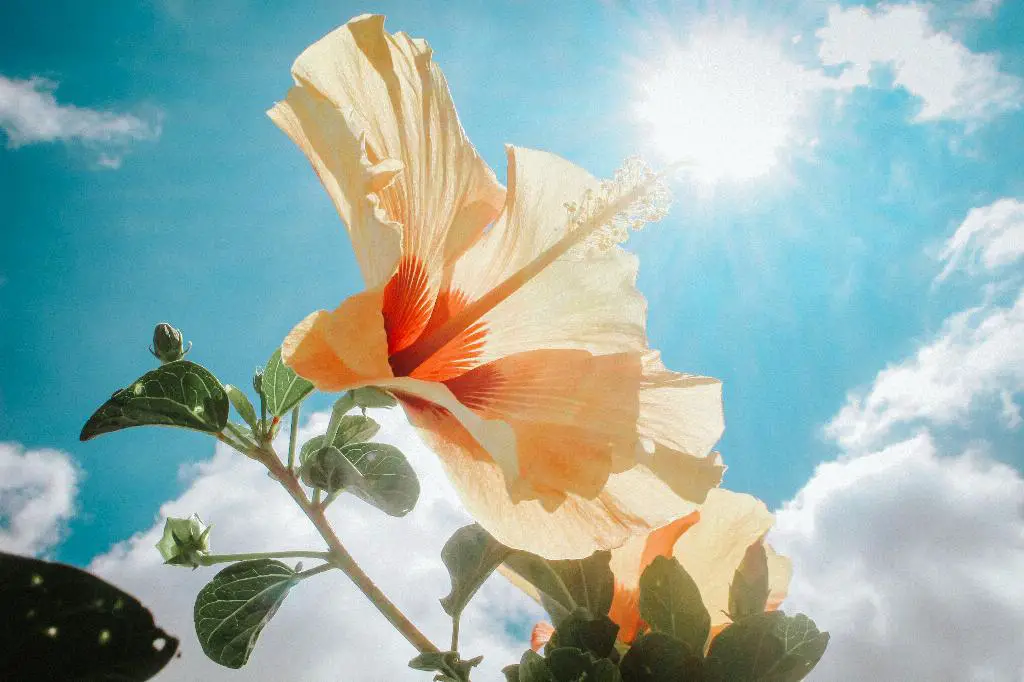When it comes to maintaining the beauty of your hibiscus plants, nothing is more frustrating than watching hibiscus buds fall off before they have the chance to bloom. One of the most common culprits behind this issue is insect pests, with thrips being a major concern. These tiny insects have a penchant for feeding on hibiscus flower buds, leading to premature dropping.
To combat this problem effectively, it is crucial to employ preventive measures that not only safeguard your hibiscus buds but also promote the overall health of your plants. An organic insecticide can serve as a potent weapon against thrips, helping to eliminate these pests and prevent further damage. Applying the insecticide weekly, following the manufacturer’s instructions, can significantly reduce the risk of hibiscus buds falling off due to insect infestations.
Aside from combating insect pests, ensuring that your hibiscus plants are properly nourished and cared for plays a pivotal role in preventing bud drop. Providing adequate water and nutrients, such as a balanced fertilizer suitable for hibiscus plants, can bolster their resistance to stressors and environmental factors that may contribute to bud loss.
Moreover, maintaining optimal growing conditions for your hibiscus plants can go a long way in preventing bud drop. Adequate sunlight, well-drained soil, and proper air circulation are essential factors that promote healthy growth and blooming. By creating an environment that mimics the natural habitat of hibiscus plants, you can help them thrive and reduce the likelihood of buds falling off prematurely.
Regularly inspecting your hibiscus plants for any signs of pest infestations or diseases is crucial in preventing bud drop. Early detection allows for prompt intervention, whether it involves using natural remedies, such as neem oil, to control pests or adjusting watering practices to prevent root rot. Vigilance and proactive care are key to maintaining the vitality of your hibiscus plants and preserving their beautiful blooms.
In addition to addressing external threats, it is essential to be mindful of factors within your control that may contribute to bud drop. Overfertilization, excessive pruning, or sudden changes in environmental conditions can stress hibiscus plants, leading to the shedding of buds. By practicing moderation in care routines and ensuring gradual transitions, you can minimize the risk of bud loss and promote healthy blooming.
Creating a schedule for regular care and maintenance of your hibiscus plants can help you stay on top of potential issues and prevent bud drop. This includes tasks such as pruning dead or damaged branches, removing spent blooms, and monitoring plant growth for any abnormalities. Consistency in care practices fosters plant health and resilience, reducing the likelihood of bud shedding.
When it comes to watering hibiscus plants, striking a balance is key to preventing bud drop. Overwatering can lead to root rot and nutrient deficiencies, while underwatering can result in wilted foliage and flower buds. Monitoring soil moisture levels and adjusting watering frequency based on plant needs can help maintain optimal conditions for hibiscus growth and blooming.
Implementing natural pest control methods, such as introducing beneficial insects or incorporating companion plants that deter pests, can complement your efforts in preventing bud drop. By fostering a biodiverse garden ecosystem, you can create a natural defense mechanism against common pests and promote the well-being of your hibiscus plants without resorting to chemical interventions.
Regularly monitoring the health and growth of your hibiscus plants allows you to identify any issues that may affect bud development and blooming. Keeping a close eye on plant foliage, buds, and overall appearance enables you to intervene promptly in case of abnormalities or signs of stress. By staying proactive and attentive to your plants’ needs, you can mitigate the risk of bud drop and ensure a vibrant display of hibiscus blossoms.
Seeking advice from local gardening experts or horticulturists can provide valuable insights into preventing bud drop and optimizing the care of your hibiscus plants. Local knowledge and expertise can offer tailored recommendations based on regional conditions and plant species, helping you implement effective strategies to maintain healthy and blooming hibiscus plants.
In conclusion, preventing hibiscus buds from falling off requires a holistic approach that addresses both external threats and internal factors that may impact plant health. By implementing preventative measures, providing proper care and maintenance, and staying vigilant in monitoring plant health, you can safeguard your hibiscus plants against bud drop and enjoy a flourishing display of vibrant blooms.

